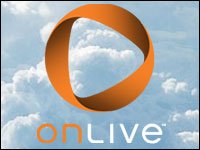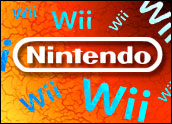
Publicis Groupe announced a new initiative Wednesday with which the French media holding company aims to boost the performance of advertisers’ marketing investments. It’s a move made to enhance Publicis’ profile in the continually expanding global digital and new media markets.
Dubbed the “VivaKi Nerve Center,” the new platform will leverage Publicis’ rank as the fourth largest communication group in the world and fuel the development of new technologies both of the open source and proprietary varieties. It will develop solutions through deals with major platform like Google, Yahoo and MSN and social networks like MySpace and Facebook. It’s also designed to deliver integrated media solutions and an optimized and more efficient data analysis.
The company’s subsidiaries, including Digitas, Starcom MediaVest, Denuo and ZenithOptimedia, will play a significant role, as will deals inked with Microsoft, Google, Yahoo and AOL’s Platform-A which will enable brands to reach target demographics on Web-connected computers and cell phones with united campaigns across multiple advertising networks.
VivaKi, according to Publicis, is an effort to remedy a system that has grown increasingly fragmented, as market leaders battle for dominance in the multi-billion dollar market. The partnerships with the top four advertising platforms, billed as the “Audience on Demand Network,” will offer advertisers the necessary tools to connect with consumers, Publicis said.
“Publics has the clients who want to learn and use the mobile platform for a marketing purpose. So it fits into the theme we have seen that a traditional media-buying company collaborates with new ad technology and network operators to conquer new media platforms. It benefits them both. Last year, [ad firm] WPP had struck a similar technology alliance deal with Google,” Harry Wang, a Parks Associates analyst, told the E-Commerce Times.
Super-Sized Ads
Google’s DoubleClick platform will be deployed as a custom technology layer across all clients, giving them easier access to other publishers, advertising networks and ad exchanges with a one-stop-shop style single interface.
The platform, according to Publicis, will also provide brands with the data they need to identify additional audiences across the platforms of collaborating partners in the initiative. Also being put to work for VivaKi are the DoubleClick exchange and DoubleClick’s Studio product, which the company said will facilitate the creation of differing versions of their messages for audiences across multiple platforms.
Deals with Platform-A will give advertisers access to AOL’s media properties and the thousands of Web sites participating in the Advertising.com network. Meanwhile, joining with Microsoft brings brands a large Internet consumer audience through the software giant’s varied online properties, which include MSN, Windows Live, Microsoft Office Live, Xbox Live and more than 500 publishers’ sites through its premium ad network, DRIVEpm.
Yahoo Goes Mobile
Yahoo’s deal with VivaKi will provide Publicis clients with more targeted and personalized advertising options to maximize global opportunities for mobile ads. The two companies will leverage Yahoo’s mobile platform technologies and integrate Publicis’ current media buying system with Yahoo’s Right Media Exchange and the soon to be released AMP, Yahoo’s online advertising management platform scheduled to roll out sometime in the third quarter of 2008.
“Essentially, what you can say is that it will drive more business to Yahoo because Publicis Groupe, the fourth largest communication group in the world, will make this inventory accessible to their clients, which are big brand names, and then these big brands will purchase ad space on Yahoo Mobile and later on on Yahoo AMP, a network of networks where they will aggregate a whole lot of inventory on the platform,” explained Karsten Weide, an IDC analyst.
Advertising Mobility
The mobile initiative will focus initially on technology integration and openness in order to assist brands to tailor their messaging and make it possible for them to connect with their target demographics on both computers and mobile phones, according to the companies.
The Paris-based company’s Phonevalley, a mobile marketing company, will integrate Yahoo’s Blueprint technology, the mobile developer platform language. It will be used as a tool to help clients scale their brand messages for a global audience and increase their time to market.
With Yahoo’s SmartAds technology, the two hope to enable brands to customize their message in a way that is relevant to the unique customer, taking advantage of the trend toward hyper-personalized mobile devices, both companies said.
Using SmartAds will provide clients with multiple versions of a brand’s message and allow Publicis Groupe to develop correlating, personal microsites relevant to the “smart mobile ads.”
The initiative will also include the adoption and continued advancement of other next-generation platforms. The platform initiatives, according to Yahoo and Publicis, will provide the foundation for the advertising industry’s first “on-demand audience network.”
“It’s a starting point. Yahoo’s one of the main advertising players in the mobile market,” said Tole J. Hart, an analyst at Gartner.
Can’t Live With It, Don’t Want to Pay for It
Both Weide and Hart said consumers know that ads are a necessary evil.
“Most people say they don’t want advertisements but they will accept them if it is dealing with some content that they like. They understand that it’s the content for free or they’ll have to pay for it. It helps if it’s not obtrusive and if it’s relevant,” Hart explained.
Survey data indicates that consumers dislike advertising and dislike it even more on a mobile phone. However, Weide told the E-Commerce Times, ads that are closely related to the user’s interests could be welcome.
“I’m in a town looking for a gas station, hotel, restaurant or bar, and the mapping application, which knows where you are, shows me the five or ten closest restaurants around me. It’s very useful information and not just intrusive ads. It’s going to be information they can use and will make a world of difference for consumers,” he said.
The benefits extend beyond consumers to businesses as well.
For example, said Weide, look at it from the point of view of someone who runs a Holiday Inn. “I want my Holiday Inn to be featured when someone is looking for a hotel. I think there is going to be a lot of money in this,” he added.























































Social Media
See all Social Media